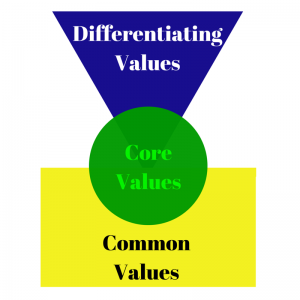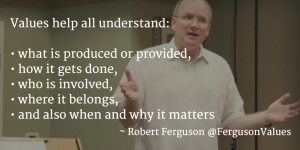Should you build your brand with transparency or stealth?
 The headline of a recent post by marketing guru Seth Godin stated Transparent or Translucent?
The headline of a recent post by marketing guru Seth Godin stated Transparent or Translucent?
In his post, Godin makes the argument that it’s fine for banks, healthcare, and the government to be transparent. But he suggests brands should be translucent, generating a glow that draws consumers to it.
Interesting proposition.
Marketers who live to build brands will likely embrace Godin’s suggestion of creating a translucent environment. The idea of building some mystery into a brand has sex appeal. Who doesn’t love the sense of intrigue and secrecy, waiting to be discovered?
This may work with a certain type of TV show (e.g. Lost, Survivor), new music labels, or the launch of a new book. The challenge is that consumers tend to move on once they figure out the mystery – unless intrigue can be continually reinvented or extended, which is very hard to do.
In other words, if the plan is to create a short-term brand – for 3 months or 3 years – then building mystery into a brand can be a powerful tool. But if marketers want to create a brand that lasts a lifetime, it would be wise to consider it from the standpoint of differentiating values.
The Value of Transparency
As Seth Godin points out, it’s ok for banks and healthcare providers to be transparent. Full disclosure is important to maintain trust and confidence.
Let’s look at the definition of transparency.
As a value, Transparency means clear; free of deceit; easily understood; open; public; readily apparent. There are many different ways – subtle nuances – that a marketer could embrace this value.
An insurance company that writes their polices in a way that is easily understood by consumers – versus lawyers – is embracing this value. A non-profit that maintains open financials, or provides public access to their activities and books, is embracing this value. A pharmaceutical company that makes readily apparent the expected benefits of a drug along with all of the possible side effects is embracing this value.
However, to be a differentiating value transparency must be viewed as unique to your brand or organization, relevant to your target customers, and easily sustainable. So, if all insurance companies made their polices easy to understand, then it’s not a differentiating value.
Sometimes, a marketer does need to embrace an unusual kind of value to develop brand differentiation.
The Value of Stealth
As a value, Stealth means avoiding detection by moving carefully; acting in secrecy.
This is not just for the FBI, CIA, or other government intelligence agencies. A number of successful marketers have embraced the value of stealth to build their brands.
Apple is the biggest brand to embrace this value. As Adam Lashinsky wrote recently in Fortune, “For a corporation so frequently discussed, Apple is poorly understood. Its products are ubiquitous, but information about the institution is scarce — which is exactly how Apple wants it.”
Stealth is a value inherently understood by everyone who works at Apple. It helps build suspense around new products and prevents competitors from beating Apple to market. Even the T-shirts sold at the company store underscore this value, which reads: “I visited the Apple campus. But that’s all I’m allowed to say.”
The trick to building a brand with the value of stealth is in the careful movement to avoid detection.
As Tim Leberecht wrote in Wired Magazine “Yes, brands need principles — but rather than always exhibiting the same look and feel, the smart brand looks and feels different all the time, while staying true to its underlying values.” Tim refers to this as embracing a paradox. It can be counter-intuitive. And yet, having a string intuition is critical to building a brand in a stealth environment.
Whether you choose to embrace the value of transparency or stealth, Seth Godin is correct about one thing: successful brands build a sense of connection, affection, and lead to stories that customers share.
When should marketers embrace the value of transparency? And when should they embrace the value of stealth?








0 Comments
Trackbacks/Pingbacks